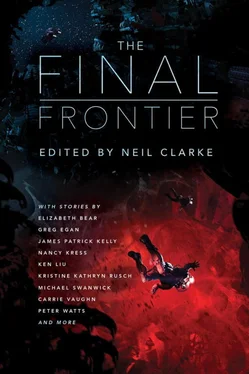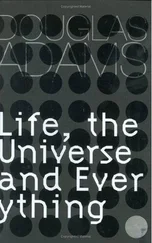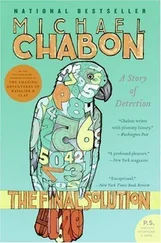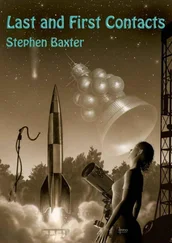And fourth, I didn’t say aloud, because Ajit is a master, he will beat you most of the time, and he needs the boost in confidence.
Ajit is not the scientist that Kane is. Practically no one in the settled worlds is the scientist that Kane is. All three of us know this, but none of us have ever mentioned it, not even once. There are geniuses who are easy for the inferior to work with, who are generous enough to slow down their mental strides to the smaller steps of the merely gifted. Kane is not one of them.
“Go,” Kane says thoughtfully. “I have friends who play that.”
This was a misstatement. Kane does not have friends, in the usual sense. He has colleagues, he has science, and he has me.
He smiled at me, a rare touch of sweet gratitude on his handsome face. “Thanks, Tirzah. I’ll play with Ajit. You’re right, it will pass the time until the probe sends back the prelim data. And if I’m occupied, maybe I’ll be less of a monster to you.”
“You’re fine to me,” I say, giving his hair another tug, grinning with the casual flippancy he prefers. “Or if you’re not, I don’t care.”
Kane laughs. In moments like this, I am especially careful that my own feelings don’t show. To either of them.
2. PROBE
We automatically woke after the hyperjump. For reasons I don’t understand, a hyperjump isn’t instantaneous, perhaps because it’s not really a “jump” but a Calabi-Yau dimension tunnel. Several days’ ship-time had passed, and the probe now drifted less than five light-years from the galactic core. The probe, power off, checked out perfectly; the shielding had held even better than expected. And so had we. My eyes widened as I studied the wardroom displays.
On the Kepler , dust clouds had softened and obscured the view. Here, nothing did. We drifted just outside a star that had begun its deadly spiral inward toward Sag A*. Visuals showed the full deadly glory around the hole: the hot blue cluster of IRS16. The giant red star IRS7 with its long tail distended by stellar winds. The stars already past the point of no return, pulled by the gravity of Sag A* inexorably toward its event horizon. The radio, gamma-ray, and infrared displays revealed even more, brilliant with the radiation pouring from every single gorgeous, lethal object in the bright sky.
And there, too, shone one of the mysteries Kane and Ajit had come to study: the massive young stars that were not being yanked toward Sag A*, and which in this place should have been neither massive nor relatively stable. Such stars should not exist this close to the hole. One star, Kane had told me, was as close to the hole as twice Pluto’s orbit from Sol. How had it gotten there?
“It’s beautiful, in a hellish way,” I said to Ajit and Kane. “I want to go up to the observatory and see it direct.”
“The observatory!” Kane said scornfully. “I need to get to work!” He sat down at his terminal.
None of this is true, of course. There is no observatory on the probe, and I can’t climb the ladder “up” to it. Nor is there a wardroom with terminals, chairs, table, displays, a computer. We are the computer, or rather we are inside it. But the programs running along with us make it all seem as real as the fleshy versions of ourselves on the Kepler . This, it was determined by previous disastrous experience in space exploration, is necessary to keep us sane and stable. Human uploads need this illusion, this shadow reality, and we accept it easily. Why not? It’s the default setting for our minds.
So Kane “sat” “at” his “terminal” to look at the preliminary data from the sensors. So did Ajit, and I “went” “upstairs” to the observatory, where I gazed outward for a long time.
I—the other “I,” the one on the Kepler —grew up on a station in the Oort Cloud, Sol System. Space is my natural home. I don’t really understand how mud-dwellers live on planets, or why they would want to, at the bottom of a murky and dirty shroud of uncontrollable air. I have learned to simulate understanding planetary love, because it is my job. Both Kane and Ajit come from rocks, Ajit from New Bombay, and Kane from Terra herself. They are space scientists, but not real spacers.
No mud-dweller ever really sees the stars. And no human being had ever seen what I saw now, the frantic heart of the human universe.
Eventually I went back downstairs, rechecked ship’s data, and then sat at the wardroom table and took up my embroidery. The ancient, irrelevant cloth-ornamenting is very soothing, almost as much so as gardening, although of course that’s not why I do it. All first-class Nurturers practice some humble handicraft. It allows you to closely observe people while appearing absorbed and harmless.
Kane, of course, was oblivious to me. I could have glared at him through a magnifying glass and he wouldn’t have noticed, not if he was working. Back on the Kepler , he had explained in simple terms—or at least as simple as Kane’s explanations ever get—why there should not be any young stars this close to the core, as well as three possible explanations for why there are. He told me all this, in typical Kane fashion, in bed. Postcoital intimacy.
“The stars’ spectra show they’re young, Tirzah. And close —SO-2 comes to within eighty AU’s of Sag A*! It’s wrong —the core is incredibly inhospitable to star formation! Also, these close-in stars have very peculiar orbits.”
“You’re taking it personally,” I observed, smiling.
“Of course I am!” This was said totally without irony. “Those young stars have no business there. The tidal forces of the hole should rip any hot dust clouds to shreds long before any stars could form. And if they formed farther out, say one hundred light-years out, they should have died before they got this close in. These supermassive stars only last a few million years.”
“But there they are.”
“Yes. Why do you still have this lacy thing on? It’s irritating.”
“Because you were so eager that I didn’t have time to get it off.”
“Well, take it off now.”
I did, and he wrapped my body close to his, and went on fretting over star formation in the core.
“There are three theories. One is that a dust cloud ringing the core, about six light-years out, keeps forming stars, which are then blown outwards again by galactic winds, and then drawn in, and repeat. Another theory is that there’s a second, intermediate medium-sized black hole orbiting Sag A* and exerting a counterpull on the stars. But if so, why aren’t we detecting its radio waves? Another idea is that the stars aren’t really young at all, they’re composites of remnants of elderly stars that merged to form a body that only looks bright and young.”
I said, “Which theory do you like?”
“None of them.” And then, in one of those lightning changes he was capable of, he focused all his attention on me. “Are you all right, Tirzah? I know this has got to be a boring voyage for you. Running ship can’t take much of your time, and neither can baby-sitting me.”
I laughed aloud and Kane, having no idea why, frowned slightly. It was such a typically Kane speech. A sudden burst of intense concern, which would prove equally transitory. No mention of Ajit at all, as if only Kane existed for me. And his total ignorance of how often I interceded between him and Ajit, smoothed over tensions between them, spent time calming and centering separately each of these men who were more like the stars outside the ship than either of them were capable of recognizing. Brilliant, heated, intense, inherently unstable.
“I’m fine, Kane. I’m enjoying myself.”
“Well, good,” he said, and I saw that he then forgot me, back to brooding about his theories.
Читать дальше












